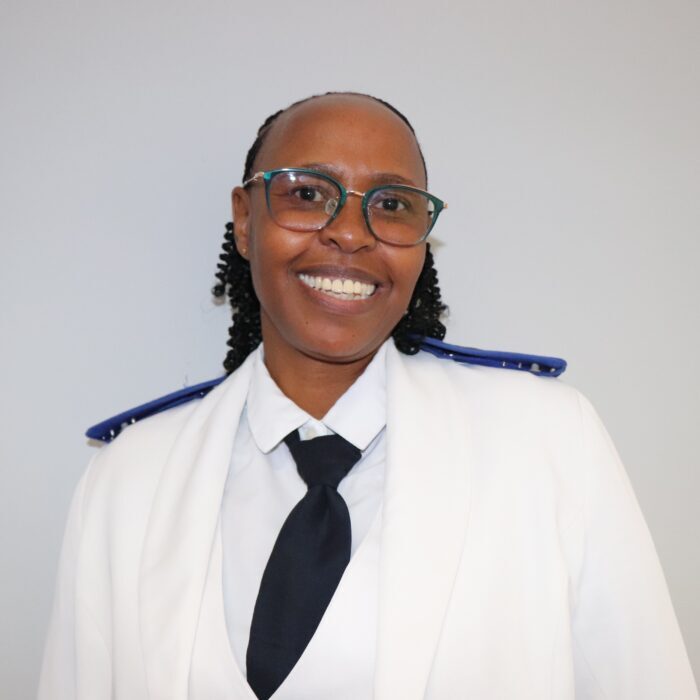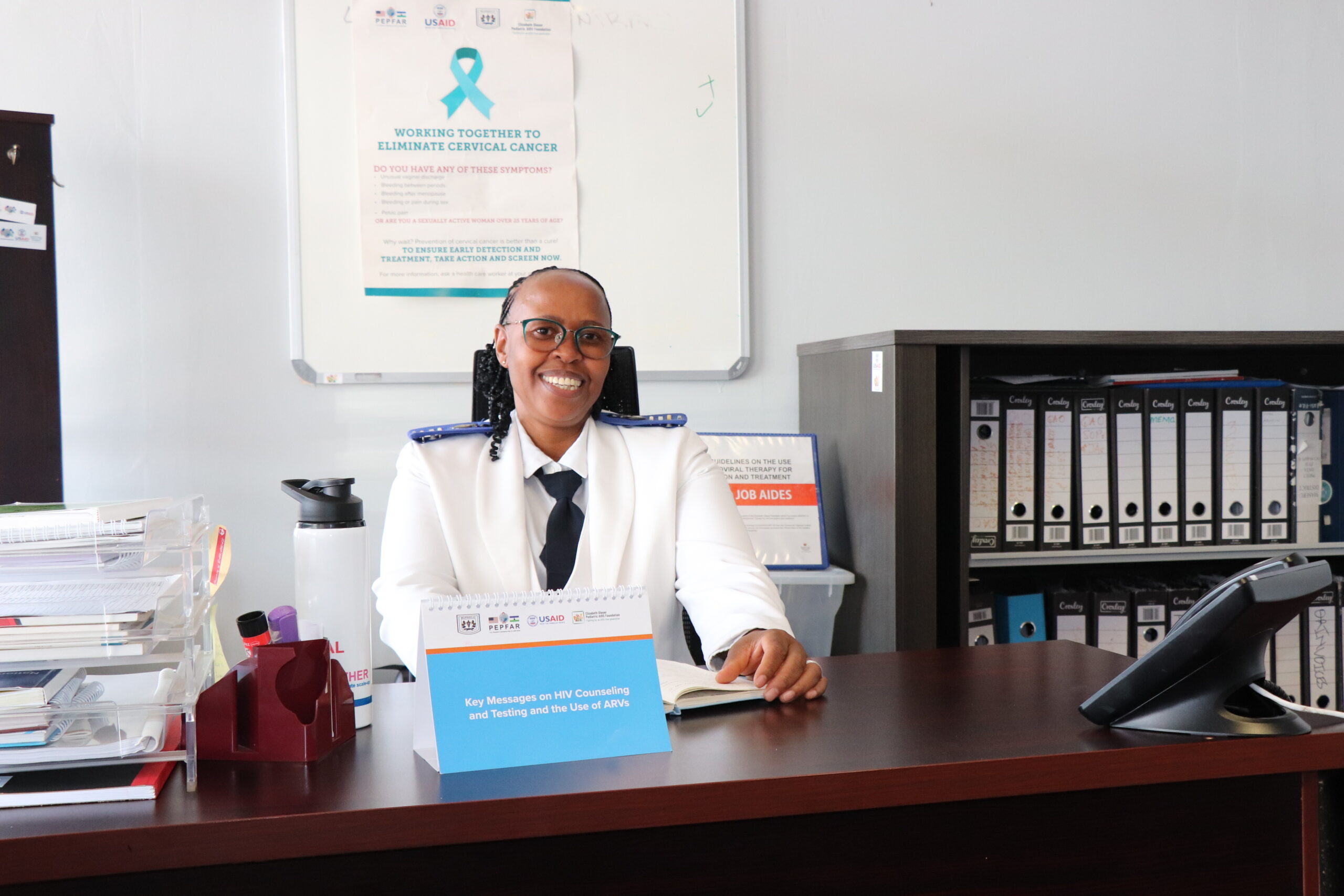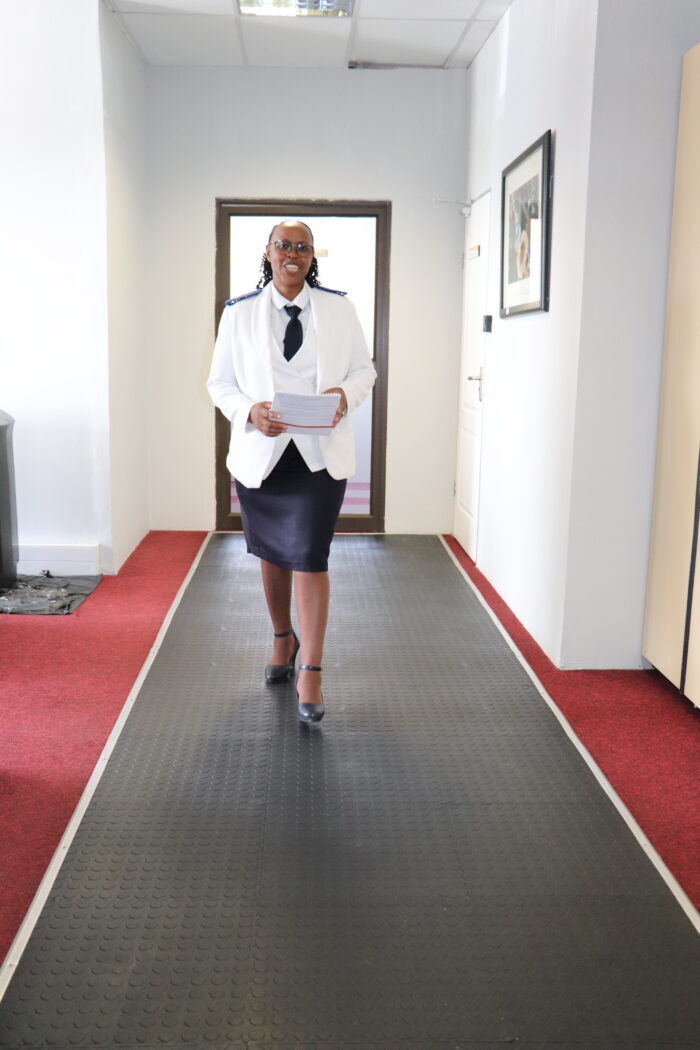 For Mamasiea Masiea, 47, being a nurse and being a mom are intertwined. She doesn’t stop being a mom when she enters her office in Quachas Nek in southeast Lesotho, where she is the district quality improvement coordinator. And she doesn’t stop being a nurse when she returns home from work. As a mom and a nurse, she ensures that her two daughters, 9 and 22, and well educated about their health and wellbeing.
For Mamasiea Masiea, 47, being a nurse and being a mom are intertwined. She doesn’t stop being a mom when she enters her office in Quachas Nek in southeast Lesotho, where she is the district quality improvement coordinator. And she doesn’t stop being a nurse when she returns home from work. As a mom and a nurse, she ensures that her two daughters, 9 and 22, and well educated about their health and wellbeing.
“My girls are my friends,” says Mamasiea. “We are so close, and I always talk to them about HIV, sexually transmitted diseases, and even about gender-based violence. And I encourage them to talk to me about anything.” Mamasiea encourages her girls to focus on their education and to avoid early teenage marriages until they are matured and empowered.
Mamasiea says that she takes the same attitude to work when she meets with adolescents and young people. Her message to fellow mothers is to be close friends to their children, both boys and girls, so that they can be able to open up and share challenges they encounter for early interventions and advice.
Taking Care of Other Mothers

In 2011, Mamasiea started working at the Elizabeth Glaser Pediatric AIDS Foundation (EGPAF) as and Mother and Child Health (MCH) nurse at St James Hospital in Thaba Tseka, where 20% of women were living with HIV. Her role was to provide direct health care services to pregnant and breastfeeding mothers.
“Among others [tasks], I provided them with health education about HIV so that they test, and those who are HIV-positive enroll in care to prevent transmission from mother to child,” she explains.
During those days, Mamasiea would work at facilities and also follow patients in the community to track those who defaulted on their treatment. She worked with village health workers to follow up and trained them to link pregnant women to the health center. She also coordinated with community leaders to hold meetings to educate elders to support pregnant and breastfeeding mothers.
“We discourage home delivery and recommend pregnant mothers to deliver at the facility to ensure the safety of both, the mother and the baby,” she advises.
Babies with mothers living with HIV would be tested. If the results came back positive for HIV, Mamasiea would go to the village to look for the baby and initiate HIV treatment. These days, it has become a lot easier to get babies on treatment early.
“The introduction of point-of-care early infant diagnosis was a game changer,” says Mamasiea. “It helped to know the HIV status of the exposed baby immediately and enroll HIV-positive babies in care at an early stage to save their lives.”
 Treat Adolescents Like Your Own Children
Treat Adolescents Like Your Own Children
A persistent challenge that Mamasiea sees regards teenage pregnancy, with many young girls who get pregnant not visiting antenatal clinics until they are sick or in their final trimester. She encourages youth to visit customized adolescent-friendly health services that cater to young people with a host of sexual and reproductive health services: family planning, HIV testing and treatment, gender-based violence care, mental health services, and other primary health services.
“The message to my fellow nurses is to treat adolescents like their own children, despite their complexity, and avoid anything that might discourage young people from coming to the facilities,” says Mamasiea.
“Let us use our motherly skills to attract young people to adopt health-seeking behavior.”



